Welcome to Puno – a land of breathtaking beauty, and home to some of the most majestic birds in the world. From the majestic Andean condors to the colorful Macaws, Puno is an ornithologist’s paradise.
Not only are the skies filled with numerous species of birds, but the lakes and rivers are also home to many waterfowl species. Whether you’re a birdwatcher, an avid photographer, or just looking to appreciate the beauty of nature, Puno is an ideal destination.
So come explore the wonders of the birds of Puno and be sure to capture the beauty of these wonderful creatures.
1. Andean Gull
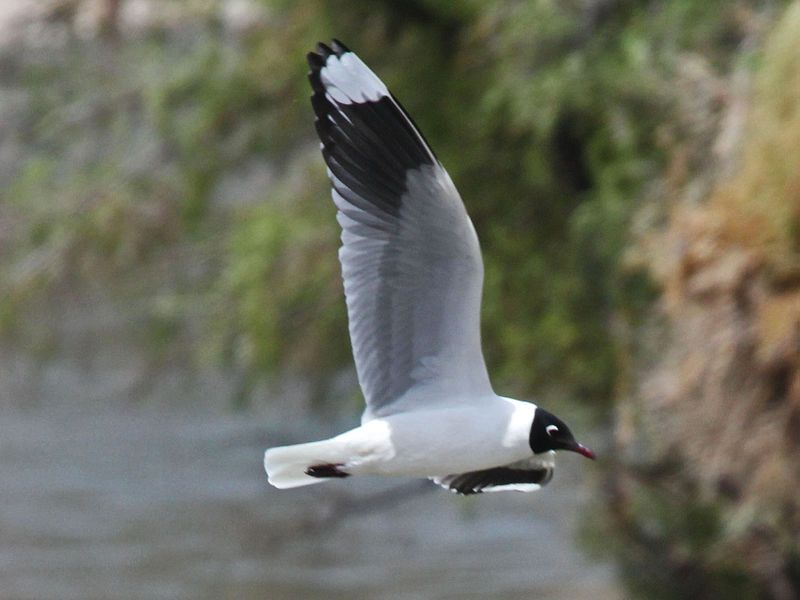
The Andean gull is a species of gull found in South America, belonging to the subfamily Larinae within the family Laridae. This family is comprised of gulls, terns, and skimmers, and the Andean gull is one of the many species of these birds found in the region.
The Andean gull is found in Argentina, Bolivia, Chile, Colombia, Ecuador, and Peru, and is distributed along the western side of the Andes mountain range. It prefers to inhabit high altitudes, and its diet consists mainly of insects, mollusks, and small crustaceans.
This species is mainly light gray in color, with a white head and throat and dark gray wings. It has yellow legs and feet, and its bill is yellow with a black tip.
Due to its wide range of habitats, the Andean gull is not considered to be threatened, and its population is currently stable.
| Kingdom | Animalia |
| Phylum | Chordata |
| Class | Aves |
| Order | Charadriiformes |
| Family | Laridae |
| Genus | Chroicocephalus |
| Species | C. serranus |
2. Andean Lapwing
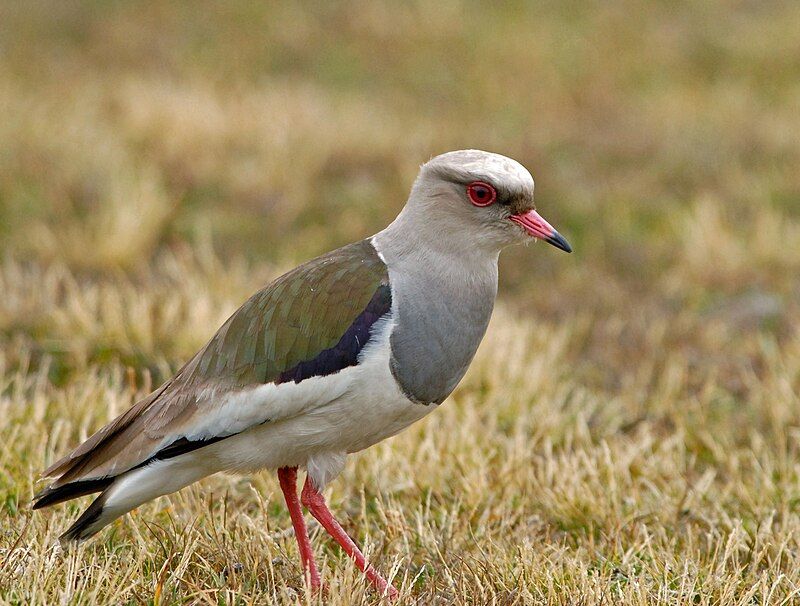
The Andean lapwing is a species of bird found in South America. It belongs to the family Charadriidae, which includes birds such as plovers and other relatives. It is distributed throughout Argentina, Bolivia, Chile, Colombia, Ecuador, and Peru.
This species is adapted to living in high altitudes and can be found in habitats such as grasslands, mountain slopes, and alpine meadows. It is omnivorous and feeds on small insects, seeds, and other invertebrates.
Its breeding season usually takes place between December and April, and the female usually lays two to four eggs in a shallow nest on the ground.
The Andean lapwing is considered to be of least concern on the IUCN Red List, although its population is declining due to human-induced changes in its habitat. Conservation efforts are currently being made in order to protect the species and its habitat.
| Kingdom | Animalia |
| Phylum | Chordata |
| Class | Aves |
| Order | Charadriiformes |
| Family | Charadriidae |
| Genus | Vanellus |
| Species | V. resplendens |
3. Andean Flicker
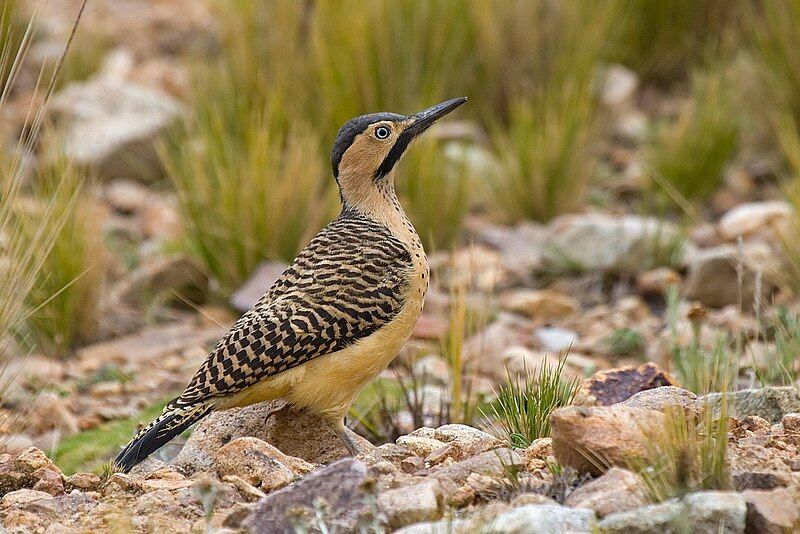
The Andean flicker is a species of bird belonging to the subfamily Picinae of the woodpecker family Picidae. This species is native to South America, found in Argentina, Bolivia, Chile, Ecuador, and Peru.
It is a medium-sized woodpecker that has a wide range of habitats, ranging from wet lowland forests to dry montane forests and scrublands. Its plumage is mainly black and white, with a red crest, a white throat, and a white collar. Its bill is yellowish and slightly curved.
The Andean flicker is known for its unique foraging behavior, which involves hammering on tree trunks and branches to search for insects. It also feeds on fruits and berries. This species is considered of least concern due to its wide range and stable population.
| Kingdom | Animalia |
| Phylum | Chordata |
| Class | Aves |
| Order | Piciformes |
| Family | Picidae |
| Genus | Colaptes |
| Species | C. rupicola |
4. Puna Ibis
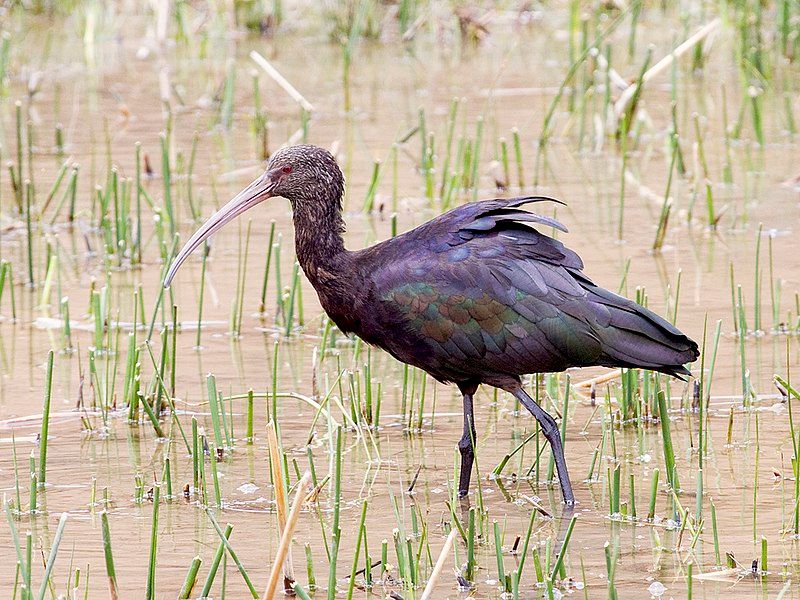
The Puna ibis is a species of bird that belongs to the family of Threskiornithidae. This bird is native to South America, being found in Argentina, Bolivia, Chile, and Peru. The Puna ibis prefers to live in wetland habitats such as swamps, marshes, and lakes.
The majority of the bird’s habitat is in the highlands of the Andes, including the Puna, but sometimes it can be found at sea level.
This species of ibis is especially adapted to living in the high altitude of the Andes, as it has a thicker layer of feathers and a larger chest than other species. The Puna ibis is a very social bird, often found in large flocks searching for food in shallow waters.
They mainly feed on aquatic invertebrates such as insect larvae, snails, and fish. The Puna ibis is a vital part of the ecosystem of the Andes, as it helps to keep the wetlands healthy by controlling the population of insects and other pests.
| Kingdom | Animalia |
| Phylum | Chordata |
| Class | Aves |
| Order | Pelecaniformes |
| Family | Threskiornithidae |
| Genus | Plegadis |
| Species | P. ridgwayi |
5. Puna Teal
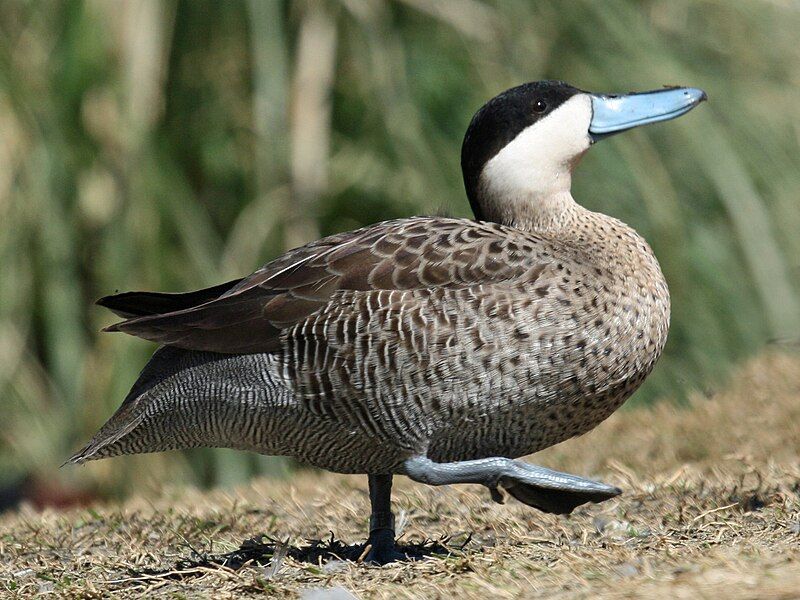
The Puna teal is a species of duck that inhabits the Andes Mountains in South America. It was previously classified as a subspecies of the silver teal. This species of duck is native to Peru, western Bolivia, northern Chile, and extreme northwestern Argentina.
It is typically found in large lakes and pools at higher altitudes. The Puna teal is a medium-sized duck, with a length of around 16 inches. Its plumage is mostly grayish-brown in color, with a white throat and a greenish-black head.
The bill is yellowish-orange and the legs are yellow. The Puna teal is a social species, and can often be seen in large flocks. The Puna teal primarily feeds on aquatic plants, insects, and small fish. It is also known to forage on the banks of lakes and ponds.
During the breeding season, the Puna teal builds a nest of grass and feathers in shallow water.
The female typically lays 4-10 eggs, which are incubated for around 25 days. Overall, the Puna teal is a species of duck that is adapted to living in the high-altitude lakes and pools of the Andes Mountains.
It has adapted to the cold temperatures and harsh conditions of this region and is a common sight in its native range.
| Kingdom | Animalia |
| Phylum | Chordata |
| Class | Aves |
| Order | Anseriformes |
| Family | Anatidae |
| Genus | Spatula |
| Species | S. puna |
6. Andean Coot
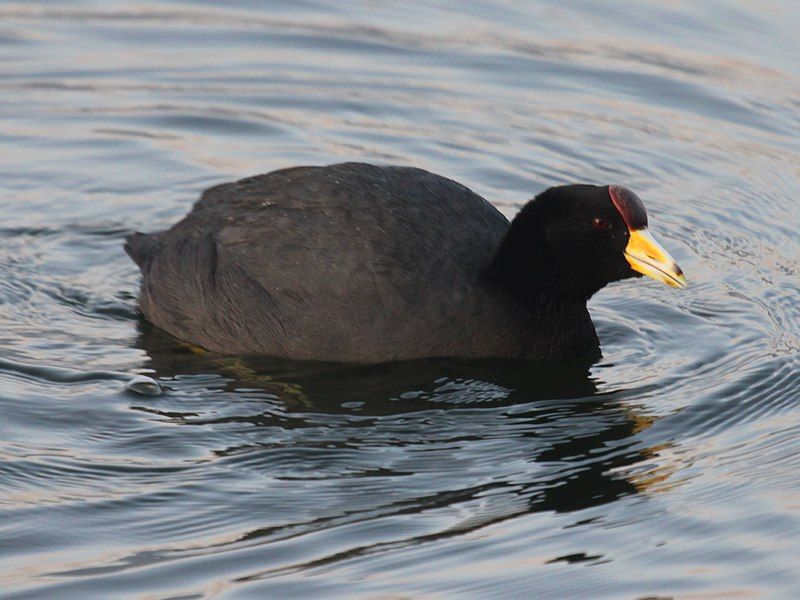
The Andean coot is a species of bird found in the South American countries of Argentina, Bolivia, Chile, Colombia, Ecuador, and Peru. It belongs to the Rallidae family, which includes rails, gallinules, and coots, and it is part of the subfamily Rallinae.
It is also known as the slate-colored coot due to its slate-colored plumage. The Andean coot has a body length of about 40 centimeters and a wingspan of up to 60 centimeters.
Its body is predominantly blackish-gray in color with a white band extending from its forehead to its neck. It also has a white patch on its cheeks, a reddish bill, and a red-brown eye. Its legs and feet are red.
The Andean coot’s diet consists mainly of aquatic vegetation, insects, and small fish, which it forages for in shallow waters. The Andean coot typically breeds in colonies, with pairs usually building nests and raising chicks together.
The nest is usually made of aquatic plants, and it is built in areas around shallow ponds or wetlands. The female typically lays between 3 and 6 eggs, which are incubated for up to three weeks before hatching.
The chicks are cared for by both parents, and they can fledge in up to four weeks. The Andean coot is listed as least concern by the IUCN, as its population is thought to be stable.
However, it is threatened by wetland habitat destruction due to agricultural expansion and pollution. Conservation efforts are being taken to protect the species and its habitat.
| Kingdom | Animalia |
| Phylum | Chordata |
| Class | Aves |
| Order | Gruiformes |
| Family | Rallidae |
| Genus | Fulica |
| Species | F. ardesiaca |
7. Spot-winged Pigeon
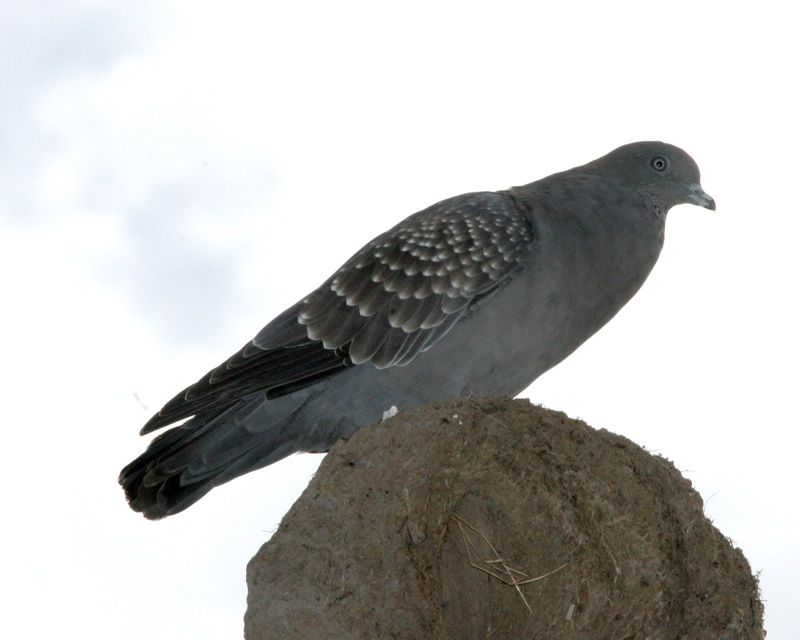
The Spot-winged Pigeon is a species of bird belonging to the Columbidae family, which includes all species of pigeons and doves. This species is found in seven South American countries: Argentina, Bolivia, Brazil, Chile, Paraguay, Peru, and Uruguay.
It is a medium-sized bird with a slim body, short legs, and a long tail. Its wings are mainly brown with white spots, and its head is light brown or gray. The Spot-winged Pigeon is a fairly common species, inhabiting both wooded areas and open fields.
They feed mainly on fruits, seeds, and grains, and tend to form small flocks when foraging. During the breeding season, they are monogamous and build a small platform nest in a tree or shrub.
The female lays two white eggs, which are incubated for about two weeks before hatching. The young remain in the nest for another two weeks before fledging.
The Spot-winged Pigeon is an important species as it helps disperse the seeds of many plants, aiding in the regeneration of vegetation.
| Kingdom | Animalia |
| Phylum | Chordata |
| Class | Aves |
| Order | Columbiformes |
| Family | Columbidae |
| Genus | Patagioenas |
| Species | P. maculosa |
8. Plumbeous Rail
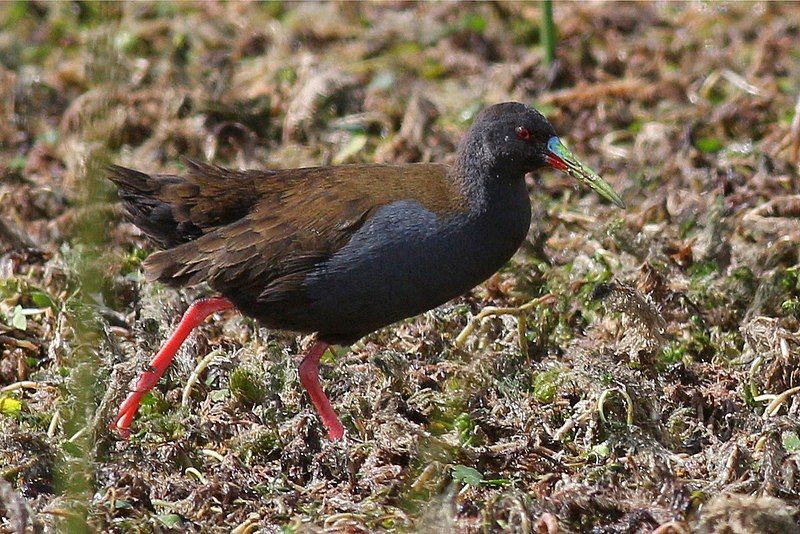
The plumbeous rail is a species of bird belonging to the Rallinae subfamily of the Rallidae family. This family consists of birds such as rails, crakes, and coots.
The plumbeous rail is native to a range of South American countries, including Argentina, Bolivia, Brazil, Chile, Ecuador, Paraguay, Peru and Uruguay. It is a small to medium-sized bird, usually measuring between 20 and 22 centimeters long.
Its plumage is predominantly gray in color, with a white throat and belly. It is usually found in wetlands, grasslands, and marshes, and feeds on insects, larvae, and small fish. It is a solitary bird that is not especially vocal but can sometimes be heard making a low trill.
Despite its wide range, it is not known to be particularly numerous and is considered to be of least concern by the IUCN.
| Kingdom | Animalia |
| Phylum | Chordata |
| Class | Aves |
| Order | Gruiformes |
| Family | Rallidae |
| Genus | Pardirallus |
| Species | P. sanguinolentus |
9. Peruvian Sierra Finch
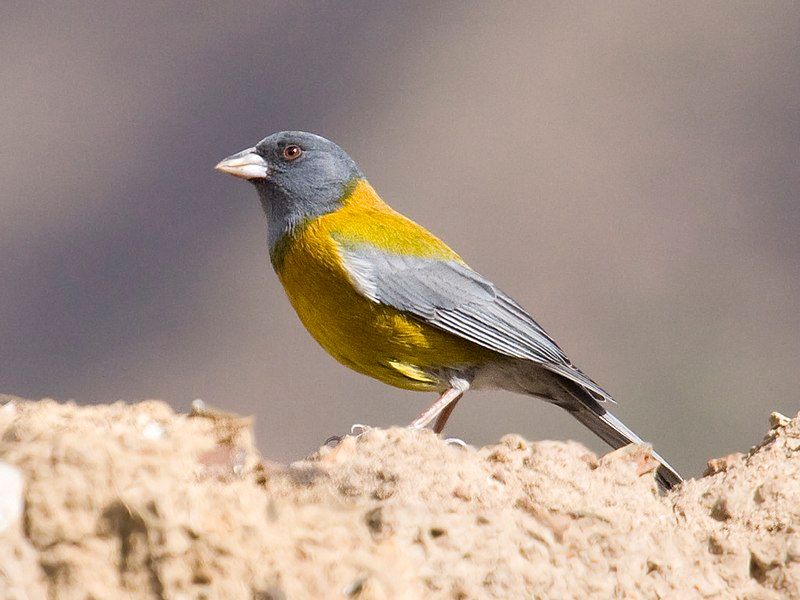
The Peruvian sierra finch is a small species of bird that belongs to the family Thraupidae. This family includes a wide variety of other birds, such as tanagers, cardinals, and some sparrows. The Peruvian sierra finch is mainly found in western Bolivia and Peru.
Its habitat is typically a high-altitude shrubland or subtropical area, and these areas provide the bird with a good source of food and protection from predators.
The shrublands are usually found at elevations of around 1,500 to 3,500 meters and provide the finch with a variety of vegetation, including grasses, shrubs, and trees. The shrubs and trees provide shelter from the wind and rain, and the grasses provide food for the finch.
The Peruvian sierra finch has adapted to this environment, and its population has grown significantly in recent years. They are known to feed on insects, seeds, and berries, and they also occasionally take nectar from flowers.
The Peruvian Sierra finch is a species of great beauty, and it is an important part of the local ecology in its natural habitat.
| Kingdom | Animalia |
| Phylum | Chordata |
| Class | Aves |
| Order | Passeriformes |
| Family | Thraupidae |
| Genus | Phrygilus |
| Species | P. punensis |
10. Cinereous Harrier
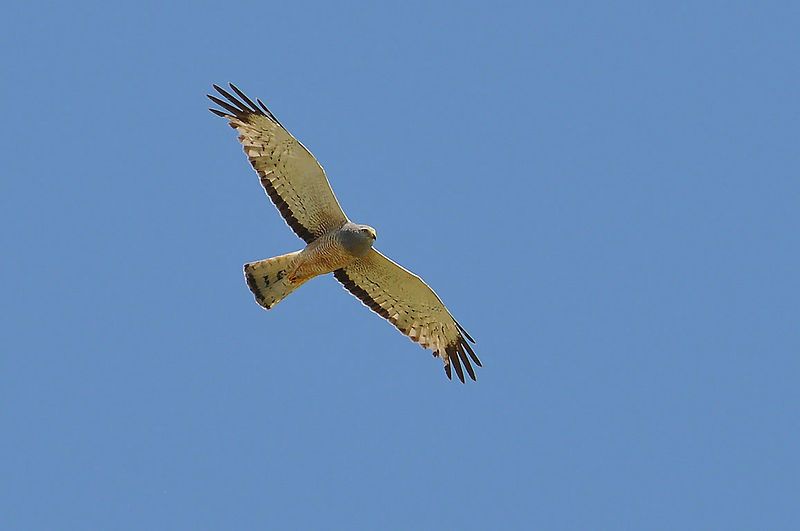
The cinereous harrier is a type of bird of prey native to the South American continent. It belongs to the harrier family, and its range of habitation extends from the very southern tip of South America, Tierra del Fuego, to the very north, Colombia.
Its breeding range covers large portions of Argentina, Chile, Bolivia, Paraguay, Peru, and southern Brazil, with the range stretching across the Andes mountain range. The cinereous harrier is a large bird, having a wingspan of up to one meter.
Its diet consists mainly of small animals, such as rodents, insects, and other birds.
It has a unique hunting technique, hovering in the air while scanning the ground for its prey below. This species of harrier is known for its long migrations, with some individuals traveling thousands of miles each year.
Most of its migrations occur between its northern and southern ranges, with some venturing as far as Central America during the winter months. The cinereous harrier is considered to be of least concern by the IUCN, and its population is considered to be stable.
Despite this, the species is threatened by habitat loss and fragmentation due to human activities. Conservation efforts are being made to protect the species and its habitat, and to ensure that its population remains stable.
| Kingdom | Animalia |
| Phylum | Chordata |
| Class | Aves |
| Order | Accipitriformes |
| Family | Accipitridae |
| Genus | Circus |
| Species | C. cinereus |
Conclusion
The birds of Puno are a wonderful and diverse group that provides much joy to the people of the region. They are a reminder of the beauty of nature and the importance of protecting our environment.
The birds of Puno are a testament to the richness of the biodiversity in the region and should be cherished and respected.